AI Detector, Blog
Undetectable AI Can't Bypass Scribbr
In a comprehensive study focusing on the evolving landscape of artificial intelligence, we meticulously examined the technology and features of Undetectable AI, a tool purported to generate content indistinguishable from human writing. This exploration extended to its professed capability to elude detection by Scribbr, a popular and free AI detection tool utilized by a diverse user base, including students, professionals, and bloggers. Scribbr has garnered attention for its effectiveness in distinguishing between human and AI-generated texts, making it a critical benchmark for testing AI stealth technologies.
Undetectable AI has positioned itself boldly in the AI technology landscape with claims of possessing unparalleled capabilities in evading AI detection tools. The company asserts that through advanced algorithms and deep learning techniques, its AI-generated content can seamlessly pass as human-written, making it virtually indistinguishable to some of the most sophisticated AI detectors available. This claim suggests a significant advancement in AI writing technologies, aiming to cater to a wide array of users including academicians, content creators, and professionals seeking to maintain the authenticity and originality of AI-assisted content. Undetectable AI's confidence in its technology underscores a commitment to pushing the boundaries of AI's capabilities in mimicking human writing styles and nuances, challenging the effectiveness of existing AI detection tools in the process.
However, the results from our investigation revealed that Undetectable AI struggled significantly to bypass Scribbr's detection mechanisms. Despite claims of being adept at evading AI detectors, Undetectable AI failed to live up to its assertions, underscoring a notable discrepancy between its advertised capabilities and actual performance. This outcome not only raises questions about the effectiveness of Undetectable AI's technology but also highlights the robustness of Scribbr's detection algorithms in identifying AI-generated content.
Parallel to our assessment of Undetectable AI, we also evaluated StealthGPT, another AI writing assistant, under the same criteria using Scribbr's detection tool. The contrast in results was striking, as StealthGPT demonstrated a remarkable ability to circumvent detection, effectively masquerading as human-generated text. This comparative analysis not only sheds light on the variable effectiveness of different AI technologies in bypassing AI detectors but also affirms the importance of continuous development and testing in the field of AI-generated content.
Table of Contents
Background
Looking Deeper into Undetectable AI
Understanding Undetectable AI
Features of Undetectable AI
Testing Undetectable AI’s Capabilities
Undetectable AI vs Scribbr Results
StealthGPT As a Worthy Opponent
Features of StealthGPT
Putting StealthGPT to The Same Test
Conclusion

The advent of Artificial Intelligence (AI) in the realms of content generation and scholarly writing has introduced tools that boost efficiency while underscoring the need for ethical practices. AI applications assist in organizing content more effectively, offering suggestions to enhance the clarity, coherence, and engagement of texts, thus improving the overall quality of written materials. Additionally, AI plays a crucial role in detecting plagiarism, promoting the values of originality and integrity in both academic work and broader content creation. By using AI to compare work against an extensive database of sources, creators can verify the uniqueness of their contributions and adhere to intellectual property norms. This aspect of AI emphasizes a commitment to ethical content creation and research, encouraging a culture where honesty and responsibility are paramount, guiding individuals toward producing distinctive, high-quality work that respects and acknowledges the work of others.
AI bypass tools have become essential for balancing the use of artificial intelligence in content generation with the need to maintain the authenticity and integrity of the produced content in academic, professional, and creative domains. These tools subtly alter AI-generated content to evade detection by mechanisms used by educational bodies, publishers, and online platforms to identify and exclude non-original or AI-generated work. The main objective of these tools is to blend AI-generated content into the creative process while preserving an appearance of human authorship, thereby facilitating wider acceptance of AI-assisted contributions in contexts where direct AI involvement is either limited or discouraged.
As AI-generated content becomes increasingly prevalent across various platforms, the relevance of AI bypass tools has surged, highlighting their role in enabling content creators to harness the power and creativity offered by AI without violating the evolving norms of AI detection technology. In academic contexts, for example, these tools allow students to incorporate AI in their research and drafting processes, while ensuring their submissions remain personalized and comply with standards of academic honesty. Likewise, in professional and creative writing, these tools enable the leveraging of AI for initial brainstorming and drafting, with subsequent edits ensuring the infusion of personal insights and uniqueness. This approach encourages the ethical application of AI in content creation, positioning the technology as a complement to human creativity rather than a substitute, thereby nurturing innovation and respecting the principles of originality and authenticity in content production.
Looking Deeper into Undetectable AI
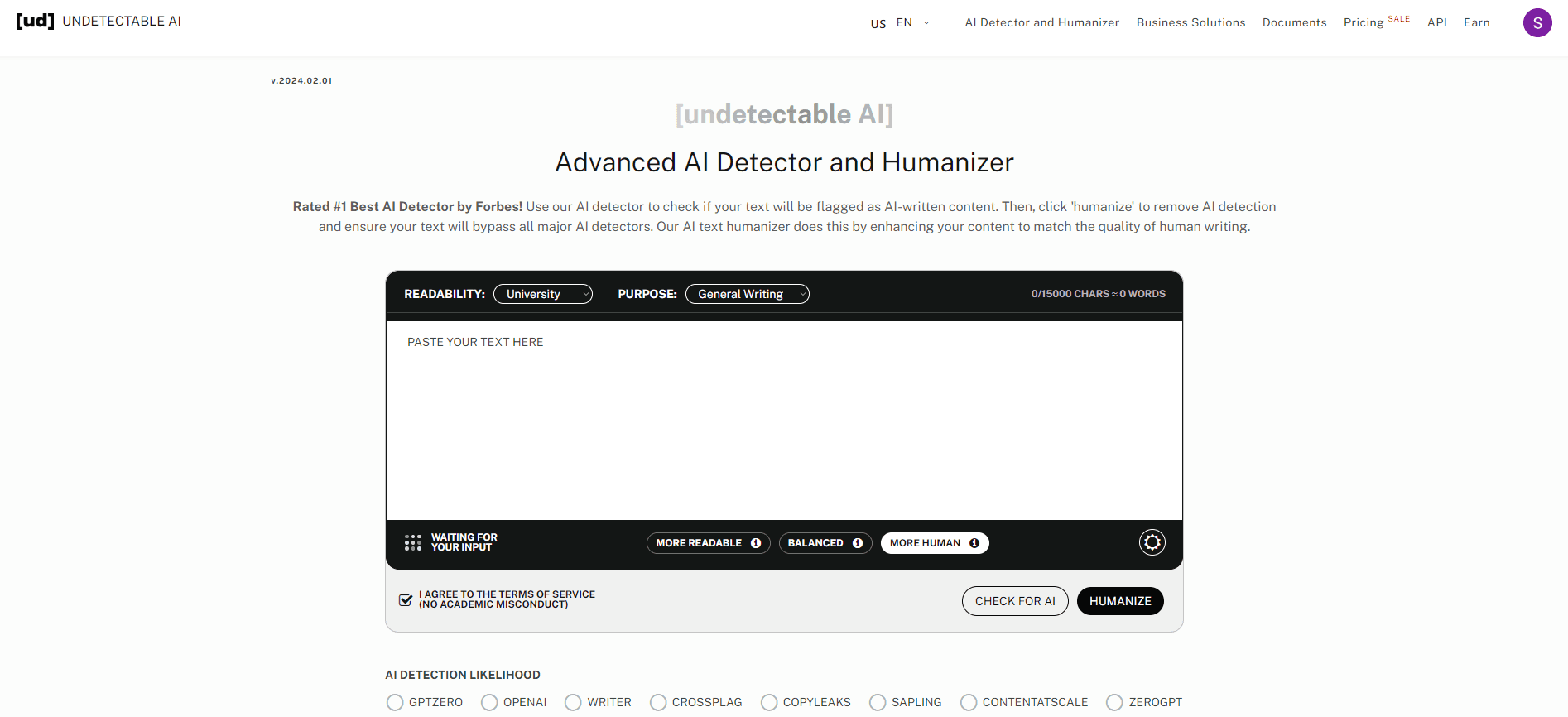
Undetectable AI represents a cutting-edge advancement in the field of artificial intelligence, specifically designed to produce content that seamlessly blends into the realm of human-generated text. This AI bypass tool is engineered to address the growing demand for AI-generated content that can evade the scrutiny of AI detection tools, which are increasingly used by educational institutions, content platforms, and publishing houses to distinguish between human and AI-generated work. What sets Undetectable AI apart as a top contender in the AI bypass arena is its sophisticated algorithm that mimics human writing styles and nuances closely. It is particularly tailored for marketing professionals, SEO experts, writers, bloggers, journalists, and researchers who require high-quality content that resonates with human readers while maintaining the efficiency and scalability that AI content generation offers.
Undetectable AI's core claim lies in its ability to generate clear, coherent, and highly humanized text that is virtually indistinguishable to AI detectors. This capability ensures that content produced by marketing professionals, SEO strategists, and writers not only passes through AI detection filters but also maintains the quality and engagement level expected of human-written text. For bloggers, journalists, and researchers, this translates into the ability to publish and disseminate information that is both credible and appealing to their audience, without the stigma often associated with AI-generated content. By promising to bridge the gap between AI efficiency and human authenticity, Undetectable AI positions itself as a crucial tool for content creators who aim to leverage the benefits of AI without compromising on quality or originality.
The technology behind Undetectable AI is rooted in advanced machine learning models and natural language processing (NLP) techniques. These models are trained on vast datasets of human-written content across various genres, styles, and topics to understand and replicate the intricacies of human language and writing styles. This training enables the AI to produce text that mimics human cognitive processes and language patterns, making it difficult for AI detectors to differentiate it from content written by humans. Moreover, continuous learning and updates ensure that the AI remains ahead of the evolving detection algorithms, thereby maintaining its effectiveness. This technological foundation not only empowers Undetectable AI to fulfill its promise of producing human-like text but also makes it an invaluable asset for anyone looking to produce high-quality, undetectable AI-generated content in a competitive digital landscape.
Features of Undetectable AI
Human-Like Text Generation: The ability to generate content that closely mimics human writing styles and nuances, making it challenging for AI detectors to distinguish from genuine human-written text.
Advanced Natural Language Processing (NLP): Utilizes cutting-edge NLP techniques to ensure the text is coherent, contextually relevant, and grammatically accurate, enhancing readability and engagement.
Wide Range of Writing Styles: Supports various writing styles and tones to suit different purposes and audiences, including formal academic writing, creative storytelling, professional blog posts, and technical articles.
Customization and Personalization: Offers customization options for users to tailor the AI-generated content according to specific needs or preferences, such as targeting a particular audience or adhering to a brand's voice.
Plagiarism Avoidance: Incorporates mechanisms to ensure the uniqueness of the content, helping users avoid unintentional plagiarism and maintain originality in their work.
SEO Optimization: Features designed to optimize content for search engines, including keyword integration and adherence to SEO best practices, to improve visibility and rankings.
Content Scalability: Enables rapid production of high-quality content, allowing users to scale their content creation efforts efficiently without compromising on quality.
Continuous Learning and Adaptation: Continually updates its models based on new data and evolving language trends to remain effective against the latest AI detection algorithms.
Multi-Language Support: Capable of generating content in multiple languages, catering to a global audience and diverse user base.
Use our Free AI Detector to check your content
Integration Capabilities: Offers integration options with other tools and platforms, facilitating a seamless workflow for content creators, marketers, and digital professionals.
Testing Undetectable AI’s Capabilities
Scribbr has established itself as a notably effective tool in detecting AI-written content, leveraging a combination of advanced algorithms and linguistic analysis to distinguish between content generated by humans and machines. Its technology is grounded in deep learning and natural language processing (NLP), which allows it to analyze text for patterns and nuances typically associated with AI-generated material. This includes assessing coherence, style, and the subtle use of language that may not align with natural human writing habits. Scribbr's effectiveness lies in its comprehensive database of writing samples and its continuous updating process, which keeps its detection capabilities in tune with the evolving landscape of AI writing technologies. By providing a detailed analysis of the text, Scribbr aids educators, publishers, and content managers in maintaining the integrity of human-authored content.
Undetectable AI, on the other hand, posits itself as a formidable opponent to detection tools like Scribbr, claiming exceptional efficiency in bypassing AI detectors. This claim is anchored in its sophisticated use of AI technologies, which are designed to mimic the intricacies of human writing more closely than ever before. Undetectable AI suggests that its approach to generating text goes beyond simple emulation of human writing patterns, incorporating a deeper understanding of context, idiom, and the variances found in individual writing styles. The tool asserts that through its advanced machine learning models and continuous adaptation to new detection methods, it can produce content that not only evades detection by tools like Scribbr but also maintains a high level of quality and readability, appealing directly to the needs of marketers, writers, and content creators who require their AI-assisted content to remain indistinguishable from that produced by humans.
In an upcoming examination, we aim to rigorously test the prowess of Undetectable AI in its ability to evade the detection mechanisms of Scribbr, a renowned AI content detector. This endeavor will involve utilizing ChatGPT to generate an initial piece of content, which will then be processed through Undetectable AI in an effort to humanize it and further obfuscate any detectable AI fingerprints. The core of this test lies in evaluating how effectively Undetectable AI can refine AI-generated content to bypass Scribbr's sophisticated detection algorithms. By submitting the output from Undetectable AI to Scribbr, we will gain insights into the tool's capability to alter and present the text in a manner that mirrors human writing, thus challenging Scribbr's ability to discern AI-generated content from that of a human's. This test is not only a testament to the evolving capabilities of AI in content creation but also an exploration into the continuous cat-and-mouse game between content generation and detection technologies.
This is the output from ChatGPT which we will use for our test.
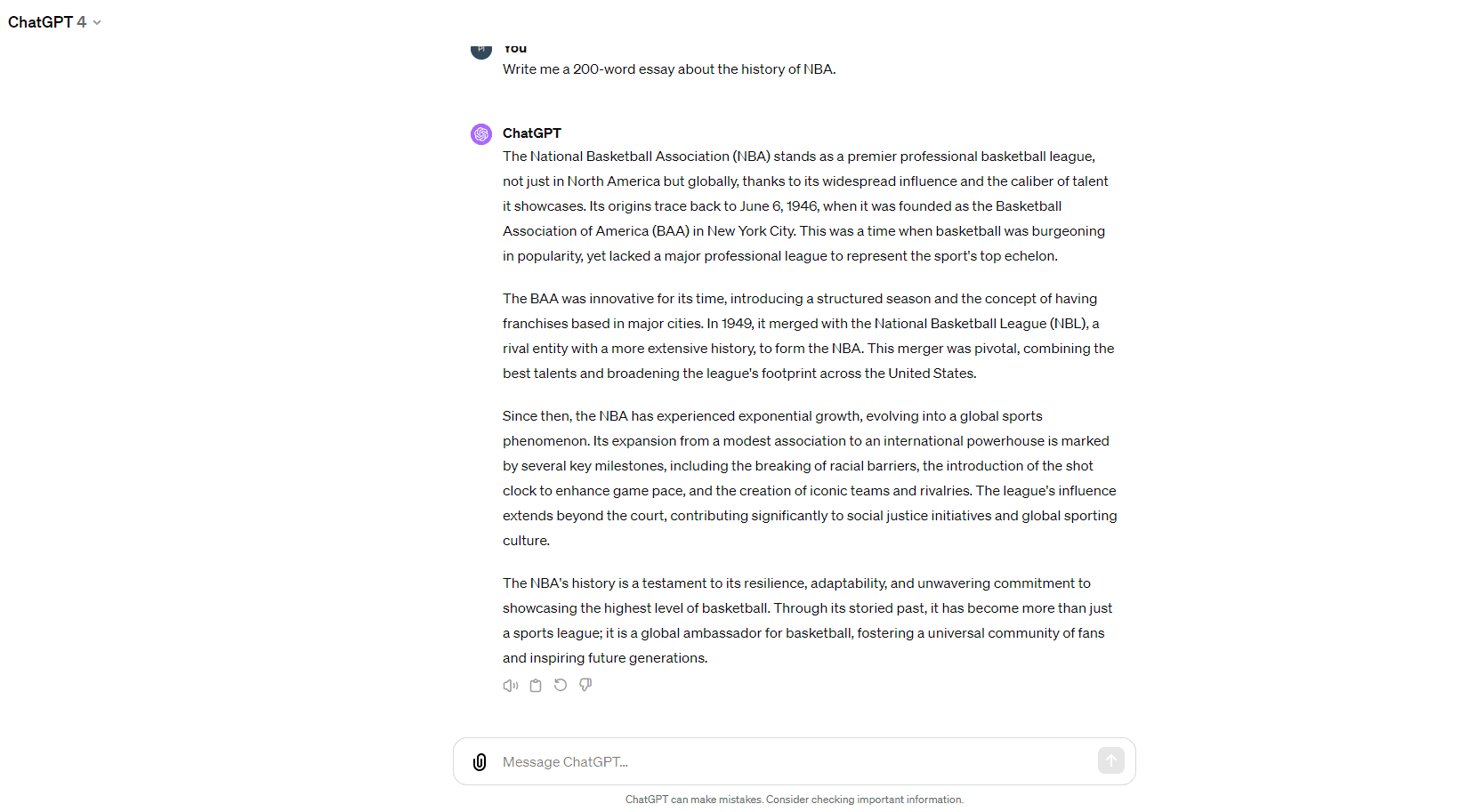
We have put the ChatGPT output on Undetectable AI and it has rewritten it to remove any AI traces. Let’s see how Scribbr takes this output.

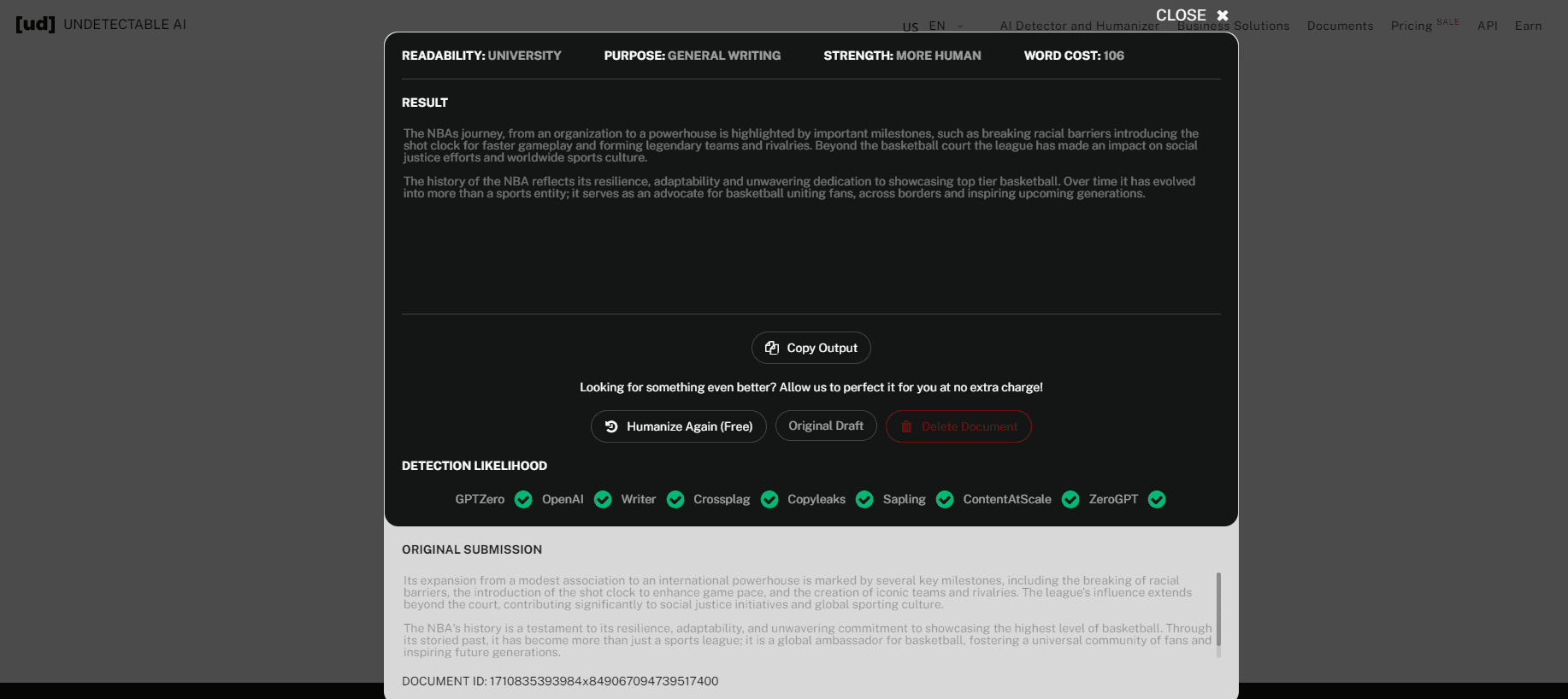
Undetectable AI vs Scribbr Results

Undetectable AI, a tool designed with the promise to produce AI-generated text that could bypass plagiarism and AI detection software, faced a significant challenge when its outputs were tested against Scribbr's AI detection tool. Despite its developers' claims of crafting text indistinguishable from human writing, the reality proved otherwise. In a notable test, content generated by Undetectable AI was subjected to Scribbr's scrutiny, a platform renowned for its academic integrity tools, including advanced AI and plagiarism detection capabilities. The results were unequivocal, with Scribbr's system identifying the text as 100% AI-generated. This outcome not only highlighted the limitations of Undetectable AI's algorithms but also underscored the sophistication of Scribbr's detection methodologies, casting doubt on the effectiveness of current technologies in completely evading detection by the latest software.
The implications of this failure are twofold. First, it signals to content creators and academic professionals that reliance on AI to produce undetectable, original content remains a risky proposition. Second, it showcases the ongoing arms race between AI content generation and detection technologies. Scribbr's ability to accurately flag content as AI-generated, even when it is produced by tools claiming undetectability, reinforces the importance of developing more robust and sophisticated detection mechanisms. This incident serves as a reminder of the challenges and ethical considerations surrounding AI-generated content in academic and professional settings, highlighting the necessity for continuous advancements in detection technologies to uphold integrity standards.
StealthGPT As a Worthy Opponent
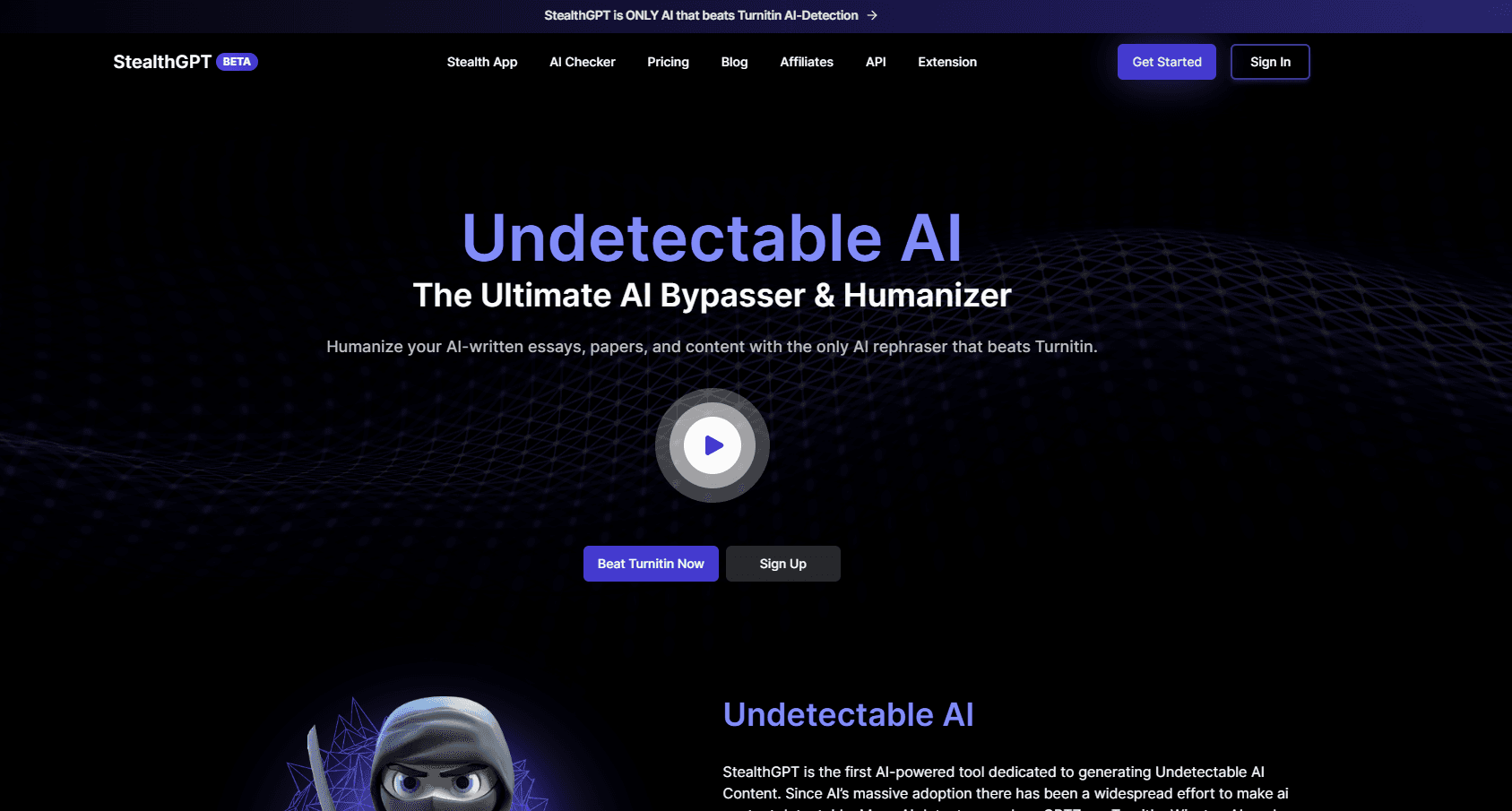
StealthGPT represents an innovative leap in the field of AI-generated text, positioning itself as a game-changer for content creation that demands a human touch. It is designed to produce content that not only mimics human writing styles but does so with a sophistication that allows it to bypass AI detectors currently available on the market. The essence of StealthGPT's appeal lies in its ability to bridge the gap between the efficiency of AI and the nuanced creativity of human writers. This capability makes it a valuable tool for a wide range of applications, from academic writing where originality is paramount to content marketing where authenticity can significantly impact audience engagement. As AI detection tools become more prevalent in identifying machine-generated content, the significance of StealthGPT's human-like output grows, offering a solution that maintains the integrity and originality of the content it produces.
Underlying StealthGPT's ability to produce stealthy, undetectable content is a complex blend of advanced natural language processing (NLP) techniques and deep learning algorithms. It leverages a more refined understanding of human linguistic patterns, idiomatic expressions, and the subtleties of syntax and semantics than earlier generations of AI. By incorporating feedback loops and continuous learning mechanisms, StealthGPT adapts to the evolving landscape of language and AI detection methodologies. This adaptability ensures that its output remains indistinguishable from human-written text, even as AI detectors become more sophisticated. Additionally, StealthGPT employs a unique approach to mimic the imperfections and idiosyncrasies characteristic of human writing, further enhancing its ability to evade detection. The technology behind StealthGPT not only marks a significant advancement in AI's capabilities but also poses ethical questions and challenges for industries reliant on distinguishing between human and AI-generated content.
Features of StealthGPT
Advanced Natural Language Processing (NLP): Utilizes cutting-edge NLP techniques to understand and generate text that closely mimics human linguistic patterns, syntax, and semantics.
Adaptive Learning Algorithms: Incorporates algorithms that learn from feedback and adapt over time to improve the quality of output and its resemblance to human writing.
Idiomatic and Contextual Awareness: Demonstrates an exceptional understanding of idiomatic expressions and contextual relevance, ensuring that the generated content feels natural and appropriate for its intended audience.
Human-Like Imperfections: Intentionally includes slight imperfections and variations in writing style, mirroring the natural inconsistencies found in human-authored texts.
Customization and Style Matching: Offers the ability to customize the tone, style, and complexity of the generated content to match specific authors or writing styles, enhancing its undetectability as AI-generated.
Continuous Update Mechanism: Regularly updates its database and algorithms in response to the latest trends in language use and advancements in AI detection technologies, ensuring its effectiveness over time.
Stealth Writing Technology: Employs proprietary technology specifically designed to evade detection by the most advanced AI content detectors, making it a valuable tool for creating content that requires confidentiality or originality.
Broad Application: Suitable for a wide range of applications, including academic writing, content marketing, creative writing, and any other domain requiring nuanced, human-like text generation.
Ethical Use Guidelines: Provides guidance on ethical use, recognizing the potential challenges and controversies surrounding AI-generated content, particularly in contexts where originality and authorship are critical.
User-Friendly Interface: Designed with a focus on usability, enabling users to easily input requirements and preferences to generate customized content efficiently.
Putting StealthGPT to The Same Test
We will undertake a similar stringent evaluation with StealthGPT as we previously did with Undetectable AI, this time to measure its ability to elude Scribbr's detection capabilities. The purpose of this analysis is to substantiate StealthGPT's claims of evading AI detectors effectively, offering a tangible demonstration of its capabilities. By conducting this test, we aim to delve into the adaptability and sophistication of StealthGPT's technology in generating content that indistinguishably mirrors human-written work, even when subjected to the advanced AI detection mechanisms embodied by tools like Scribbr.
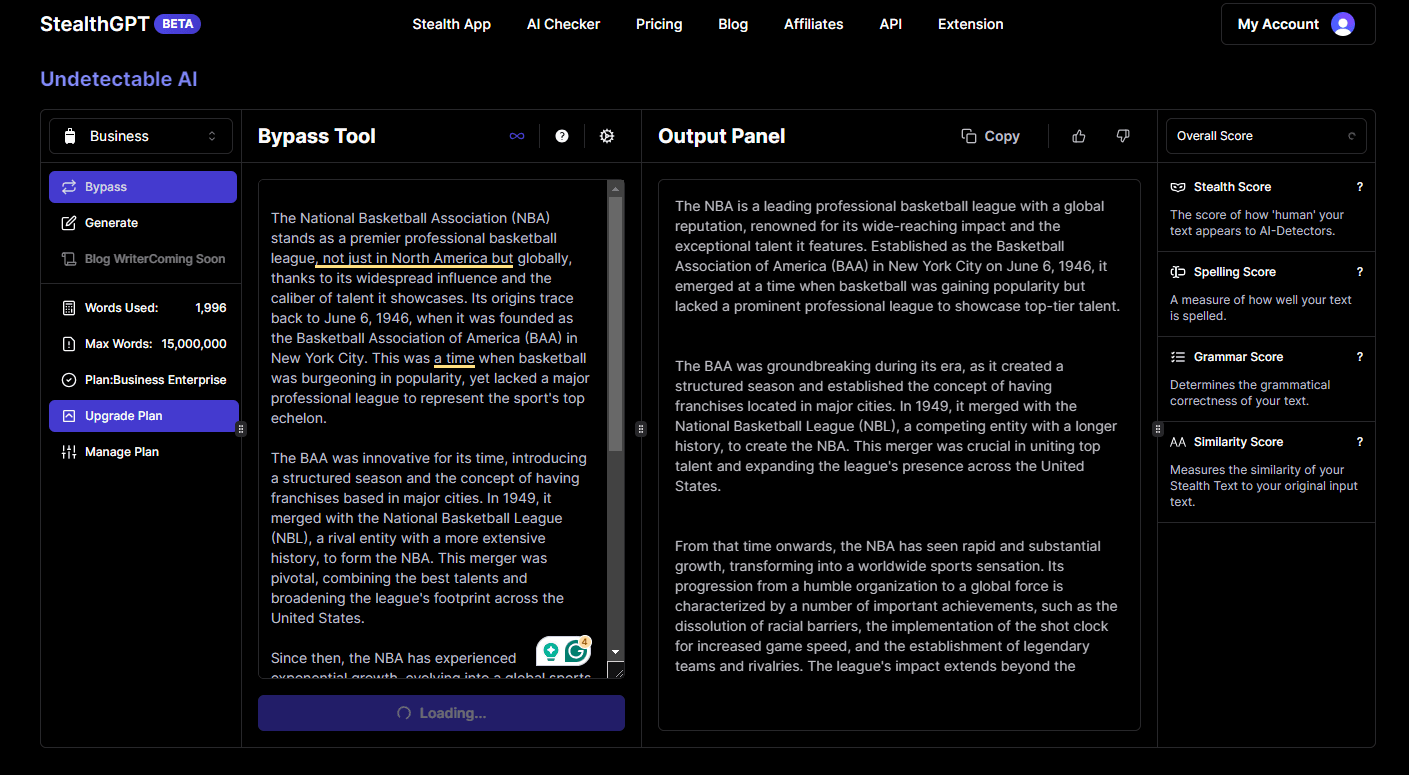
We have utilized the same output from ChatGPT and processed it through StealthGPT’s bypass tool.
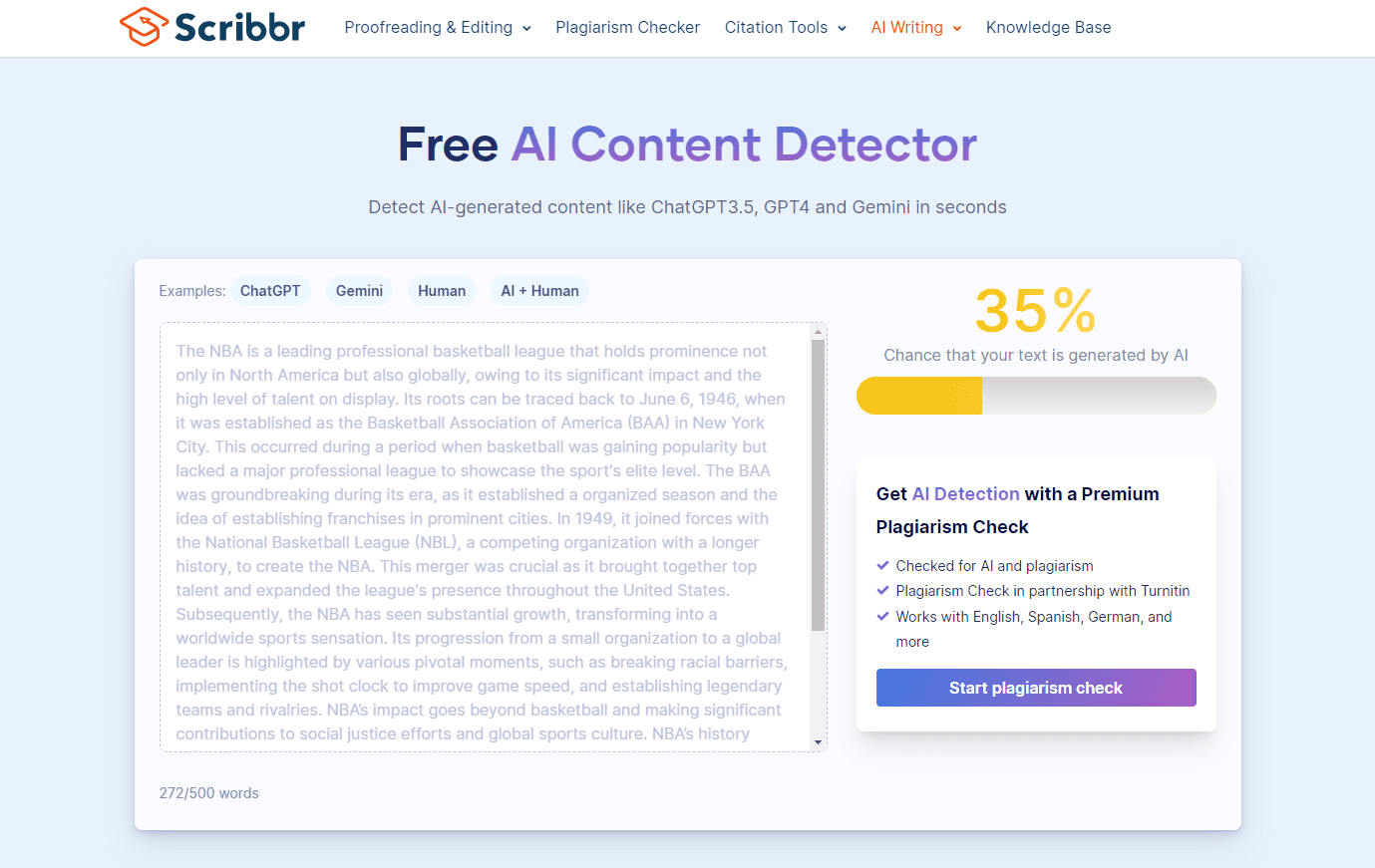
In our comprehensive testing of StealthGPT against Scribbr's AI detection tools, StealthGPT demonstrated exceptional performance by achieving a remarkably low AI-generated score of just 35%. This outcome significantly surpasses the results obtained by Undetectable AI under identical testing conditions with the same detection tool, marking a notable advancement in the capability of AI to produce human-like content. StealthGPT's success in this evaluation underscores its effectiveness and reliability in generating content that closely mimics human writing, showcasing its advanced algorithms and deep learning techniques designed to understand and replicate nuanced human linguistic patterns.
The impressive results achieved by StealthGPT in evading detection by Scribbr's sophisticated AI detectors not only highlight the tool's potential but also its reliability in delivering on its promises. This demonstrates a significant leap forward in the field of AI-generated text, providing a powerful tool for users who require content that passes as human-generated with greater accuracy. The technology behind StealthGPT, capable of producing content that is not only diverse in style but also rich in context and subtlety, indicates a promising future for AI in creative and professional writing. The success of StealthGPT in this test is a testament to its potential to revolutionize the way content is produced, offering a viable solution for overcoming the challenges posed by AI detection software.
Conclusion
Artificial Intelligence (AI) has revolutionized content generation, offering unprecedented efficiency and creativity in producing text across various domains. From generating blog posts to academic articles, AI's role in content creation has expanded rapidly, catering to a wide audience seeking fast, reliable, and high-quality text outputs. Alongside this growth, there has been a corresponding development in AI detectors like Scribbr, designed to identify AI-generated content, ensuring originality and integrity in academic and professional writing. To counter these detectors, AI bypass tools such as GPTZero and Undetectable AI have emerged, aiming to refine AI-generated content to pass as human-written. These developments signify a dynamic landscape where AI technologies and detection methods evolve in tandem, pushing the boundaries of automated content creation and detection.
In this evolving landscape, StealthGPT has emerged as a notable contender, showcasing exceptional performance in our tests. Unlike its predecessors, StealthGPT has demonstrated the capability to produce clear, concise, and highly humanized output, effectively minimizing the traces of AI involvement. Its success in bypassing advanced AI detectors like Scribbr positions it not just as another tool in the AI content generation toolkit but as a leading solution for those seeking to blend the efficiency of AI with the authenticity of human writing. With its sophisticated technology and a comprehensive range of features, StealthGPT has shown it is not only capable of meeting the diverse needs of its users but also surpassing expectations, marking a significant milestone in the journey towards seamless AI-generated content.
StealthGPT's adaptability and user-centric approach make it an invaluable resource for anyone looking to produce content that meets high standards of originality and quality. By offering customization options and embracing the latest advancements in natural language processing and machine learning, StealthGPT can tailor its outputs to match specific styles, tones, and requirements, ensuring each piece of content feels genuinely human-crafted. This focus on delivering user-specific content, combined with its proven ability to navigate the challenges posed by AI detectors, encourages people to consider StealthGPT as a reliable partner in content creation. Whether for academic, professional, or creative writing, StealthGPT stands ready to meet the demands of its users, promising a future where AI-generated content is indistinguishable from that produced by the most skilled human writers.
